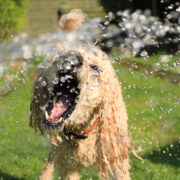If you’re a cat lover, you know just how finicky your little feline can be about their diet. You might also know that domestic cats are what are called obligate carnivores, much like their wild ancestors. That means they need a diet high that consists mainly of animal protein to meet their nutritional needs.
In fact, their systems can’t process most vegetable matter, but does that mean you should be food raw food to your little mouser?
Is Raw Meat Better for Your Cat?
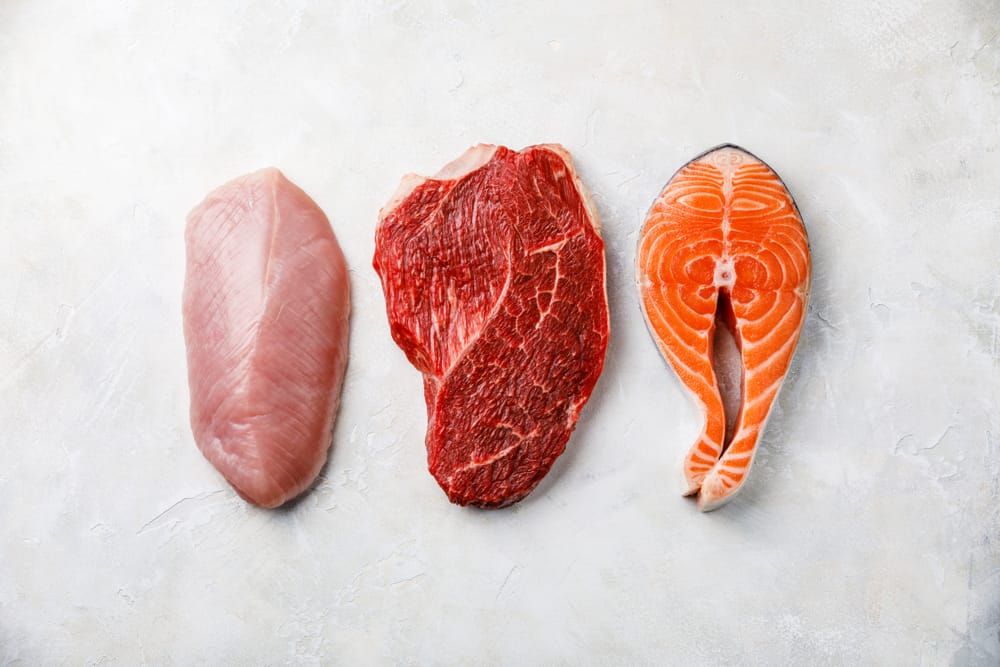
Cats don’t use carbohydrates as a source of energy; they only use animal protein, but that doesn’t mean the protein source has to be from raw food, and it’s not the only thing your cat needs.
While a raw diet can be nutritionally sound for your kitty, there are also commercial cat foods that provide them with the nutrients they need from cooked protein sources.
Let’s take a look at what you need to consider about your cat’s diet requirements, no matter which type of food you feed your little feline friend.
Water Content
Cats typically get the majority of their water directly from their food. If you’re feeding kibble, that’s very low in water content. Cooked, canned cat food, however, provides as much or more water when compared to a raw cat food diet. That’s an important consideration.
High-Quality Ingredients

It’s important to realize that uncooked food doesn’t necessarily mean the same thing as high-quality or easily digestible food. Cooking can actually increase the nutritional value of some foods. A great example is raw seafood. Raw seafood has an enzyme called thiaminase.
Thiaminase actually breaks down thiamine, which is an important B vitamin. If your little feline friend is eating mostly raw seafood, he could be at risk for a thiamine deficiency. If your cat is deficient in thiamine, he could have symptoms that include a poor appetite, seizures, and death.
When you cook seafood, however, that breaks down the thiaminase, which makes the seafood safer for your cat. If you’re feeding raw food, you’ll want to investigate which foods are safe and which might be better cooked.
What About the Nutritional Value of Raw Food?
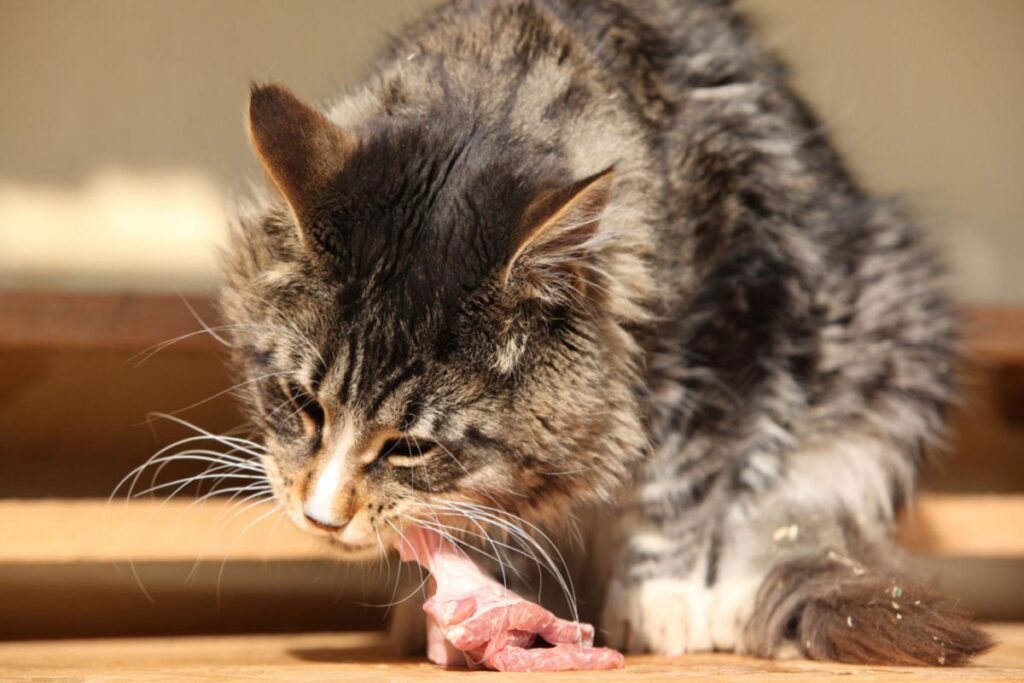
While many pet parents are getting on the “raw is better” bandwagon, you should know that there is no scientific study that has ever shown raw food to be more nutritious than other types of cat food.
While it is true that a high-quality raw food diet would definitely be superior to a low-quality processed food diet, you could easily get the same results by simply switching to high-quality canned food.
It’s also important to realize that not all raw diet foods are the same. There are also some raw diets that are low-quality, and some can even be dangerous for both your cat and you (see below).
The most important thing to consider about your cat’s diet is that he needs more than just animal protein. He also needs certain fatty acids like omega-6 and omega-3, amino acids such as taurine, arachidonic acid, calcium, and vitamins A, D, and several B vitamins.
No matter what kind of raw food you’re feeding, you want to ensure those nutrients are part of the recipe in sufficient amounts for him to be healthy.
Is Homemade Raw Cat Food Better than Commercial?
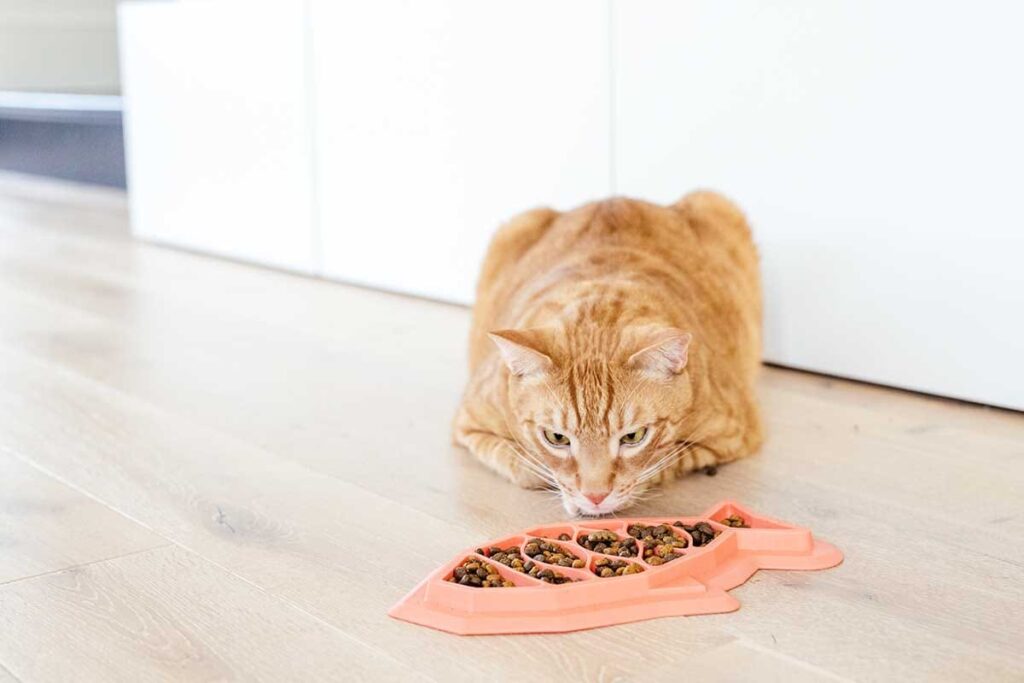
If you are considering feeding raw cat food, you might be wondering if it would be better to make it yourself as opposed to buying commercial raw food. Once again, there are a few things you need to consider. Let’s explore each option.
Homemade Raw Cat Food
If you make your own cat food, you definitely have better control over exactly what they eat, which is what some pet parents love. However, it’s important to know that while your kitty is an obligate carnivore, meat is not enough. He’s going to need more.
Just like with humans, your cat needs a balance of certain nutrients, including amino acids, fats, vitamins, and minerals. That’s why you’ll want to use a combination of meat, internal organs, and vitamin and mineral supplements.
Sometimes, the recipes for a nutritionally complete raw cat food diet are complex, and research has shown that one of the biggest risks associated with home-prepared raw pet food diets is malnutrition. Even if you have a veterinary nutritionist prepare your cat’s recipes, it’s common for cat parents to stray from the recipe.
What About Commerical Raw Cat Food?
Commercial brands of raw pet food definitely take the guesswork out of it for the pet parents, and there are many reputable manufacturers who stick to the recommended guidelines laid out by the Association of American Feed Control Officials (AAFCO).
If you go commercial, you can ensure you’re feeding a brand with the AAFCO’s statement of nutritional adequacy on the food label. They assess cat food brands to ensure they meet their nutritional requirements to fulfill the needs of cats at all life stages, whether they are adult cats, kittens, or older cats.
When you see their statement, you can be confident that the brand you’re feeding conforms to their standards. That means your kitty will get his basic nutritional needs met.
What is BARF, and What Does it Mean?
If you’re thinking about feeding raw, you might have heard the acronym BARF. It is often used to describe certain raw cat foods. It has two possible translations: Biologically appropriate raw foods or bones and raw foods.
Proponents of BARF would argue that it’s important to include raw bone and organ meat in your raw food recipe. They would say this is how you can create a balanced diet for your feline buddy.
While it is true those ingredients can add nutritional benefits to your cat’s raw meals, you can achieve similar results by feeding simply raw muscle meat and adding other supplements to make up for the lack of bone.
Are There Any Dangers to Feeding Raw Food?
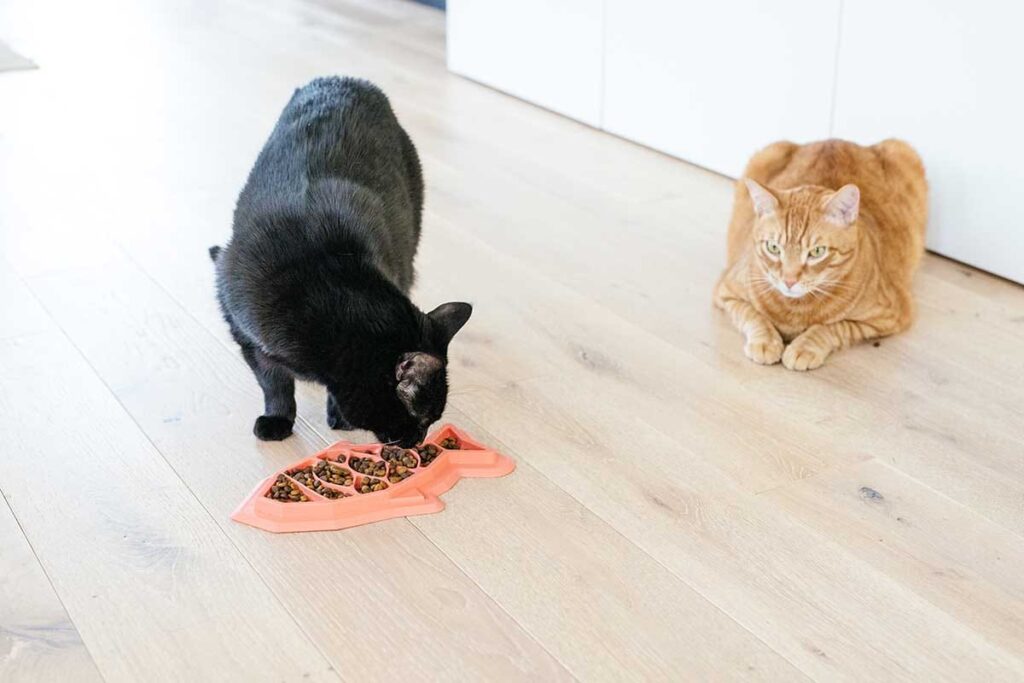
There are definitely some concerns you need to know about when feeding raw meat to your cat. Specifically, there are three main concerns to look out for:
- Pathogen risks to both your cat and you
- Nutritional imbalance in your raw food recipe
- Foreign bodies, like bones, can cause serious health problems
Let’s Talk About Pathogen Risks
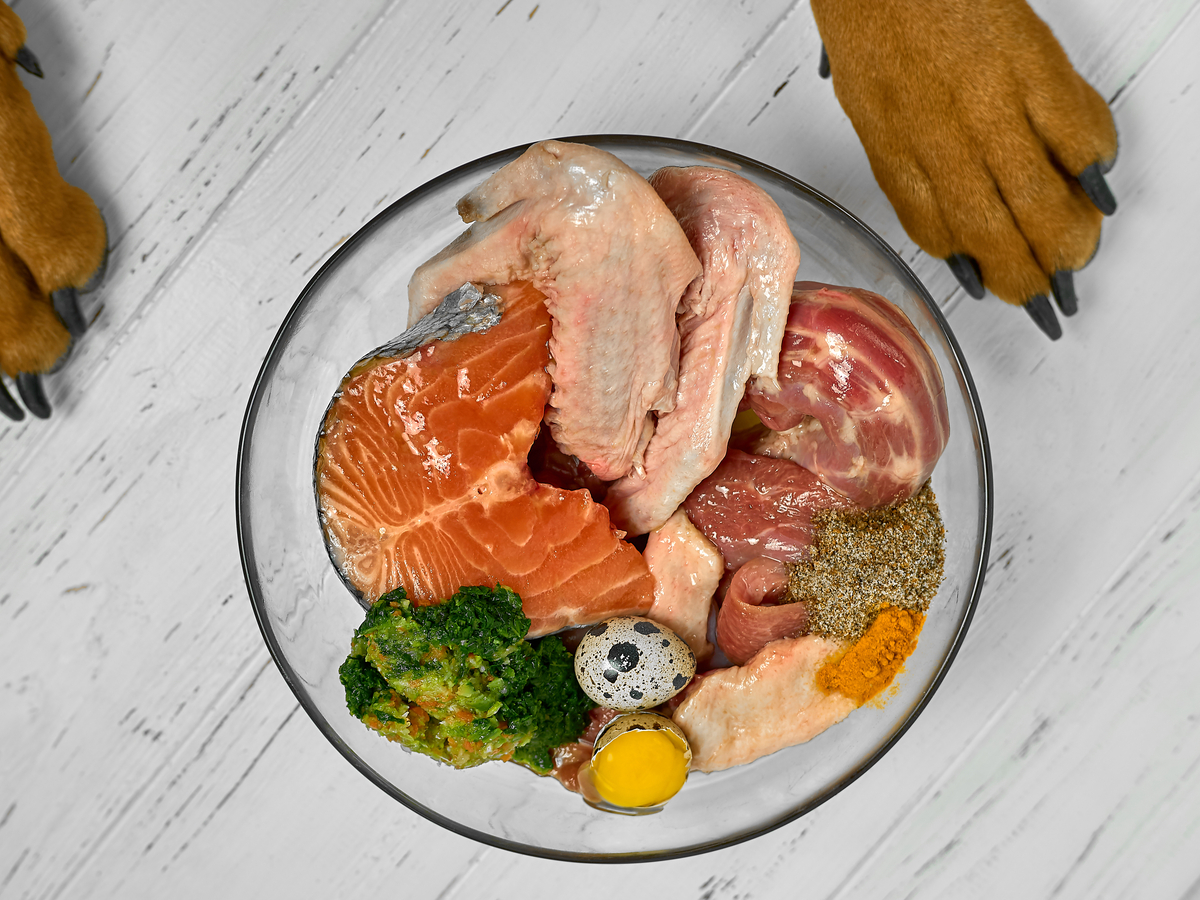
We’ve already discussed the need to make sure you’re feeding a nutritionally complete raw food recipe and how you can avoid a problem with foreign bodies by supplementing your muscle meat recipe. So let’s turn our attention to the biggest risk of feeding raw food – pathogens.
Pathogens are disease-causing organisms like bacteria, and these will be the biggest threat to both you and your cat. The Centers for Disease Control and Prevention (CDC), as well as the Center for Veterinary Medicine (CVM) and the US Food and Drug Administration (FDA), have all taken a stand against feeding raw food diets to cats or dogs.
Their number one concern was the presence of dangerous bacteria in raw pet food products. They surveyed several commercial raw pet food products and found that nearly 25% tested positive for harmful bacteria.
The following are the bacteria that were found in several brands:
- Salmonella
- Listeria monocytogenes
- Campylobacter
- Clostridium difficile
- Clostridium perfringens
- Clostridium botulinum
- Escherichia coli (E. coli)
- Yersinia enterocolitica
- Enterotoxigenic Staphylococcus aureus
Every one of these bacteria can not only cause disease in cats but in cat owners who handle the food as well. Salmonella is the cause of more than 1.2 million cases of food-borne illness in humans each year. In cats, this dangerous bacteria can cause vomiting, bloody diarrhea, fever, lethargy, and a lack of appetite.
Listeria monocytogenes cause more human hospitalization and death as a result of food contamination than other bacteria. In fact, more than 90% of people infected with this bacteria end up in the hospital. It also survives in very adverse environments.
Cats can carry this bacteria without having any symptoms, which makes it more difficult to control outbreaks in your family.
All of the other bacteria on the list also pose a significant threat to both your health and your cat’s health. This is an important consideration if you’re feeding raw food.
How Can You Protect Yourself, Your Family, and Your Cat?
If you feed raw food, there are some things you can do to protect your family, including your fur babies. Here are a few simple things you can do:
- Wash your hands thoroughly — this is an easy thing to do, and you should every time after handling raw cat or dog food.
- Disinfect surfaces — any surface or object that comes in contact with raw pet food should be thoroughly disinfected.
- Keep the raw food frozen — while this doesn’t completely protect you (some bacteria can survive freezing), it is helpful. When you’re ready to thaw it out, put it in the refrigerator rather than on the counter or in the sink.
- Don’t mix raw food with other food — keep them separate.
- Cover any unused portions and refrigerate them or dispose of them safely.
- Avoid kissing your cat or letting him lick your face after eating raw food.
- Wash your hands after petting your cat or getting licked by him.
- Buy commercial raw food to reduce the risk of malnutrition and avoid foreign bodies.
Taking these steps won’t ensure that you don’t become infected or that your pet’s health doesn’t suffer, but these are good habits that can reduce the risks.
Raw Diet for Cats: Final Thoughts
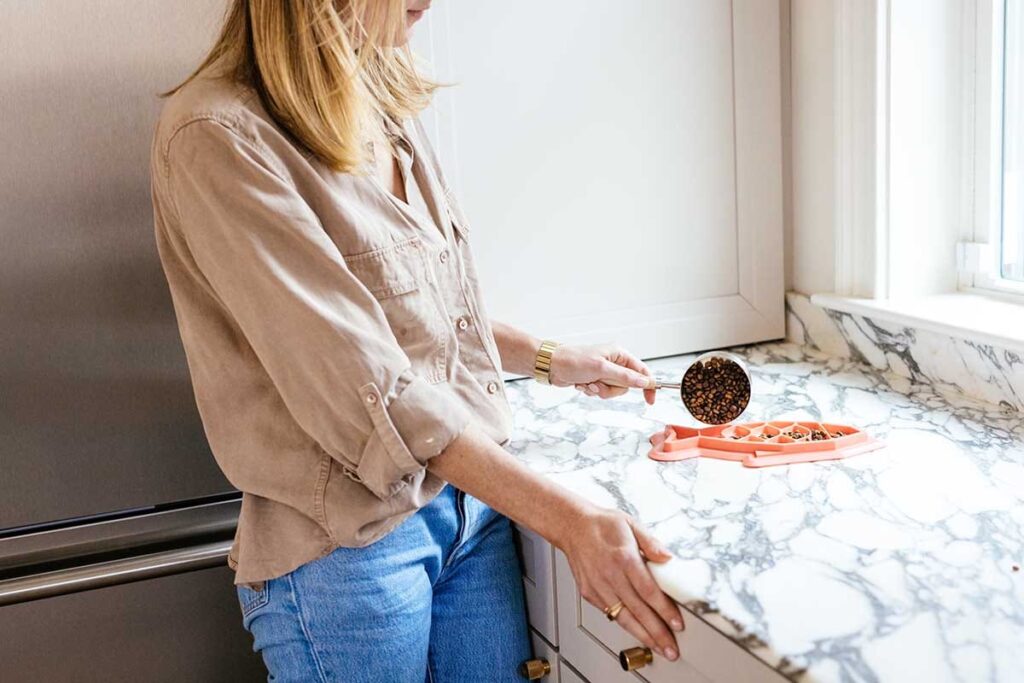
Though there are health benefits to feeding your feline raw food, there are some considerable risks as well. If you prepare the raw food recipe yourself, it’s possible your recipe won’t be nutritionally complete. That could have significant repercussions for your pet’s health.
Additionally, handling raw food presents another risk to both you and your cat. It can be contaminated by disease-causing pathogens that can cause big problems. What’s more, some raw food recipes include bones or other items that could create a foreign body obstruction if your cat swallows them.
If, after considering the pros and cons of feeding raw food, you still want to go ahead with it, be sure to consult a veterinary nutritionist to ensure you’re feeding a nutritionally complete recipe, and take all the precautions listed above to keep yourself, your family, and your cat safe.
